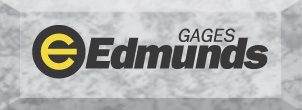THE NEW METROLOGY STANDARDS
Part of my daily routine includes fielding telephone calls and retrieving e-mail from shops across the country involved in gage calibration. Many of the inquirers pose questions like these:
"Is the standard we are working to still valid?"
"Which standard applies to our operation?"
"Which is the most current standard?"
With all the changes and revisions in standards over the past five years, particularly the cancellation of the military standard MIL-STD45662A in 1995, I can understand the confusion. Here is an overview of the current metrology standards.
ISO 10012-1-1992, Quality Assurance Requirements for Measuring Equipment
Part 1: Metrological Confirmation System for Measuring Equipment. When you use a micrometer, for example, this standard assures that it measures to the accuracy to which it was manufactured. ISO 10012-1-1992 is for companies working within one of the ISO 9000 quality management systems and who are performing gage calibrations and gage control in-house. ISO 10012 is under revision at this time, as all ISO standards must be reviewed every five years.
ISO-IEE Guide 25: 90, General Requirements for the Competence of Calibration and Testing Laboratories.
If you are considering using an outside source, make sure your calibration lab is certified to this international standard. It is a document for calibration and testing laboratories to follow in the development and implementation of their quality systems. It may also be used by accreditation bodies, certification bodies and others concerned with the competence of laboratories. Laboratory accreditation bodies such as A2LA (American Association for Laboratory Accreditation) and NVLAP (National Voluntary Laboratory Accreditation Program) both use ISO Guide 25 as a foundation document for accreditation because it has international acceptance. ISO Guide 25 is also being revised at this time, and when it is released it will be known as ISO Standard - 17025. Its release date will be late 1999 or early 2000.
ANSI/NCSL Z540-1-94, American National Standard for Calibration - Calibration Laboratories and Measuring and Test Equipment - General Requirements.
This standard, sponsored by the National Conference of Standards Laboratories, adds areas that ISO Guide 25 does not include, though both documents are similar. Our American organization felt Guide 25:90 didn't cover equipment well enough. Like Guide 25:90, Z540-1 is intended for metrology labs performing calibration services for outside customers. Part 1 establishes the requirements that a laboratory must demonstrate to prove competence in performing calibrations. Part 2 titled, Quality Assurance Requirements for Measuring and Test Equipment, applies to the actual equipment used in the calibration process and actually mirrors ISO10012-1-1992.
ANSI/NCSL Z540 - 2-97, American National Standard for Expressing Uncertainty-U.S. Guide to the Expression of Measurement of Uncertainty.
The subject of uncertainty is a complex one. It is difficult for all the governing bodies to agree on the best way to determine a lab's uncertainty, but we all need to realize that it is there. Uncertainty should not be confused with accuracy. When we talk about accuracy, we mean the accuracy of the equipment. When we talk of uncertainty it's the entire gaging process, and many factors come into play. An expert in this subject, Ted Doiron, says about uncertainty, "the more we find we can measure, the more we find we can't."
This new document, Z540-2-97, is the American version of what is commonly known as the "GUM" or the ISO Guide to the Expression of Uncertainty in Measurement. Any lab working on accreditation should have a copy of both.
ISO - 14253-2, Geometrical Product Specifications (GPS) - Inspection by Measurement of Work pieces and Measuring Equipment - Part 2: Guide to the Estimation of Uncertainty in GPS Measurement, in Calibration of Measurement Equipment and in Product Verification.
At this writing, this international standard is still in the draft stage. The most recent one I reviewed is easy to understand and includes concise examples of common dimensional gaging uncertainty parameters.
ANSI/ASQC M1 - 1996 American National Standard for Calibration Systems.
This standard was originally issued in 1987 and the reaffirmed in 1996. M1 provides guidance on two different methods for quality assurance of calibrations. Though not as common as the ISO standards, it is one of few documents that clarify the check standards that should be in use in all metrology /calibration laboratories.
For more information and where to purchase these standards contact:
ANSI (American National Standards Institute)
11w. 42nd St.
New York, N.Y. 10036
1-800-THE-ASME
(212) 642-4980
Fax (212) 302-1286
ASQ (American Society for Quality)
Box #3005
Milwaukee, WI 53201
1-800-218-4916
(414) 270-8810
Reprinted from Modern Machine Shop Online
Confused about which ones apply to you? You're not alone. Here's a report that will make sense of the alphabet soup for those involved in gage calibration.
By Robert Edmunds III




A New Dimension In Precision Measurement
.
(860) 677-2813
Toll Free 877-521-5818